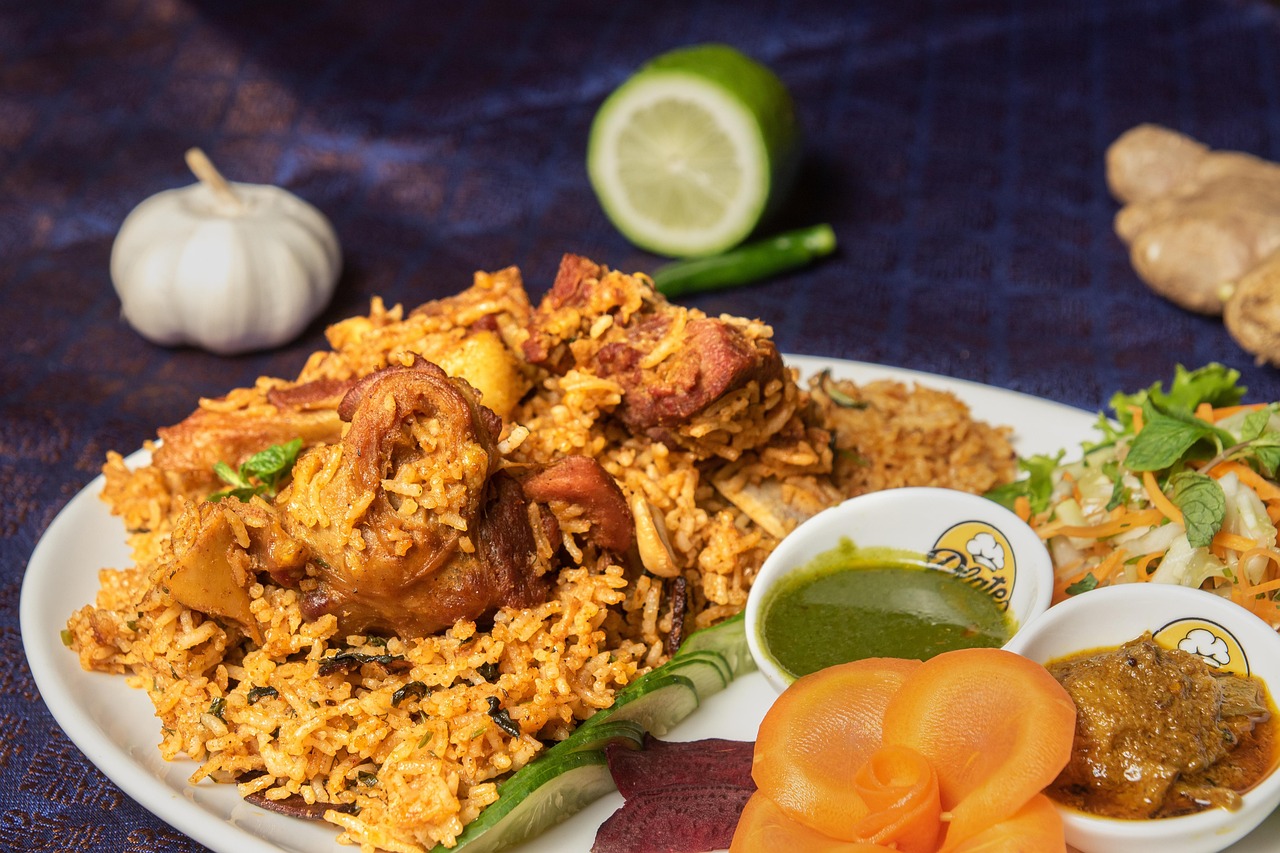This article delves into the rich culinary traditions of Bengali and Lucknowi biryanis, highlighting their unique ingredients, preparation methods, and cultural significance. By exploring these aspects, readers will gain a deeper understanding of the similarities and differences that define these iconic dishes.
1. Historical Origins of Bengali and Lucknowi Biryani
The origins of both biryanis are steeped in history. Bengali biryani evolved during the Mughal era, influenced by local Bengali ingredients and cooking techniques. In contrast, Lucknowi biryani, or Awadhi biryani, emerged from the royal kitchens of the Nawabs of Awadh, showcasing a blend of Mughal and local flavors.
2. Key Ingredients in Bengali Biryani
Bengali biryani is known for its use of potatoes and marinated meats, often cooked with cardamom, cinnamon, and cloves. These ingredients contribute to its distinctive taste and aroma, setting it apart from other biryanis.
3. Key Ingredients in Lucknowi Biryani
Lucknowi biryani is characterized by the use of saffron, rose water, and a variety of aromatic spices, creating a rich, flavorful profile that reflects its royal heritage.
4. Cooking Techniques: Bengali Biryani
The preparation of Bengali biryani often utilizes the ‘Dum’ method, where the rice and meat are layered and slow-cooked, allowing the flavors to meld beautifully.
5. Cooking Techniques: Lucknowi Biryani
Lucknowi biryani employs a meticulous layering process, marinating the meat and using the ‘Dum’ cooking technique to preserve moisture and infuse the dish with rich flavors.
6. Flavor Profiles: Bengali Biryani
The flavor profile of Bengali biryani is typically more subtle and sweet, complemented by spices that enhance the meat and potatoes, resulting in a comforting dish.
7. Flavor Profiles: Lucknowi Biryani
In contrast, Lucknowi biryani boasts a robust and aromatic flavor profile, thanks to the use of saffron and a variety of spices, making it a luxurious dish often associated with royal feasts.
8. Cultural Significance of Bengali Biryani
Bengali biryani holds great cultural importance, often served during celebrations and festivals, symbolizing hospitality and tradition.
9. Cultural Significance of Lucknowi Biryani
In Lucknow, biryani represents the culinary legacy of the Nawabs, forming an integral part of the city’s social and cultural fabric.
10. Popular Variations of Bengali Biryani
There are several regional variations of Bengali biryani, each showcasing the diversity within Bengali cuisine and its adaptability to local tastes.
11. Popular Variations of Lucknowi Biryani
Lucknowi biryani features variations such as ‘Kacchi’ and ‘Pakki’ biryanis, each with distinct preparation methods and flavor profiles.
12. Conclusion: Choosing Between Bengali and Lucknowi Biryani
Ultimately, the choice between Bengali and Lucknowi biryani depends on personal preference, with each offering a unique culinary experience that reflects its cultural heritage and regional flavors.

1. Historical Origins of Bengali and Lucknowi Biryani
Bengali Biryani vs. Lucknowi Biryani: What’s the Difference?
This article explores the rich culinary traditions of Bengali and Lucknowi biryanis, detailing their unique ingredients, preparation methods, and cultural significance to help you understand their differences and similarities.
Understanding the historical context of both biryanis reveals how regional influences shaped their unique flavors and cooking styles, providing a backdrop to their culinary evolution. The origins of Bengali biryani can be traced back to the Mughal era, where the influences of Persian cooking merged with local ingredients and methods. This fusion resulted in a dish that is not only rich in flavor but also reflects the agricultural abundance of Bengal, particularly rice and potatoes.
On the other hand, Lucknowi biryani, also known as Awadhi biryani, has its roots in the royal kitchens of the Nawabs of Awadh. This style emphasizes a more refined approach to cooking, incorporating intricate techniques and a variety of spices that highlight the opulence of its royal heritage. The Nawabs, known for their lavish feasts, adopted and adapted the biryani to suit their tastes, leading to the creation of a dish that is aromatic and rich, often served during grand celebrations.
Both biryanis showcase the culinary artistry of their respective regions, influenced by historical events, trade routes, and cultural exchanges. The evolution of these dishes not only tells the story of their ingredients but also reflects the socio-political landscapes that shaped their development. As Bengal and Awadh interacted with various cultures, their biryanis absorbed diverse flavors and techniques, resulting in the unique variations we enjoy today.
In conclusion, the historical origins of Bengali and Lucknowi biryanis are a testament to the rich tapestry of Indian culinary traditions, highlighting how regional influences can create distinct yet equally cherished dishes.
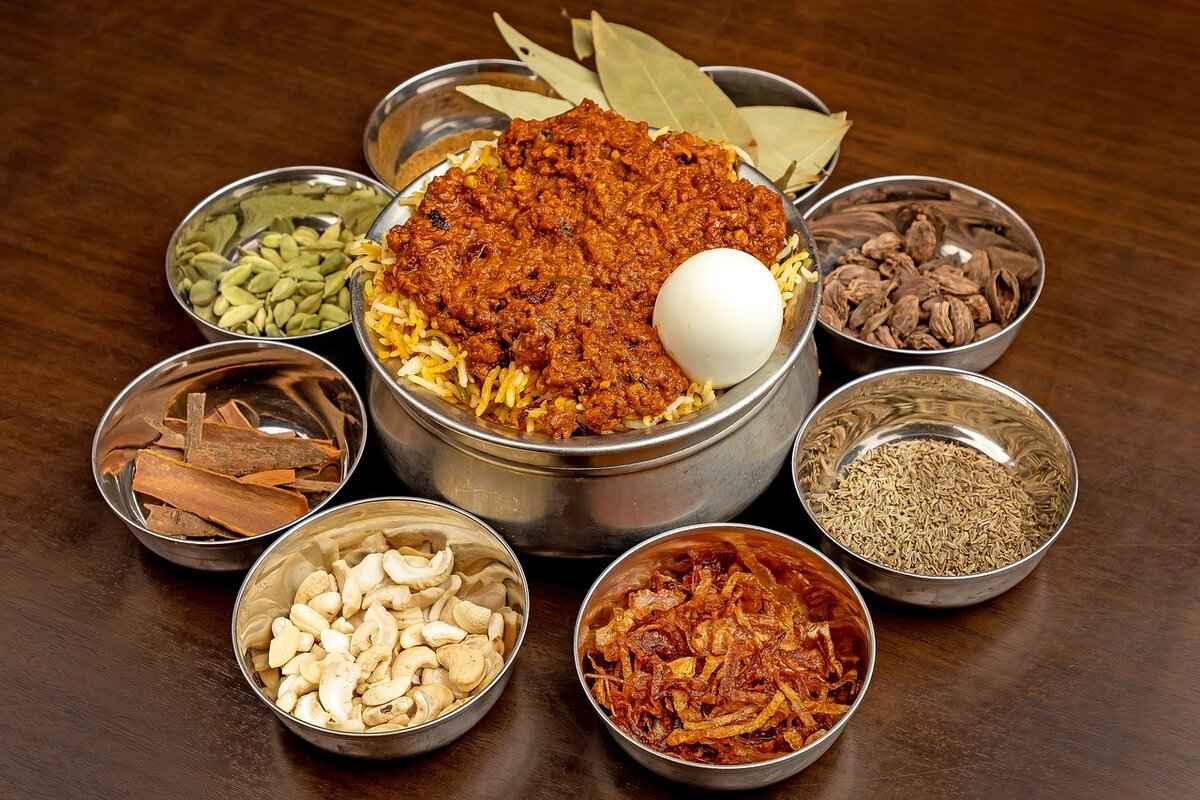
2. Key Ingredients in Bengali Biryani
Bengali Biryani is a beloved dish that stands out not only for its rich flavors but also for its unique ingredients that reflect the cultural heritage of Bengal. While biryani is enjoyed in various forms across India, Bengali biryani is particularly distinguished by its use of potatoes and marinated meats.
One of the most notable features of Bengali biryani is the inclusion of whole potatoes in the dish. These potatoes, often cooked to perfection, absorb the aromatic spices and flavors of the biryani, adding a comforting texture and subtle sweetness. This practice is a hallmark of Bengali cuisine, where vegetables are celebrated alongside meat.
In addition to potatoes, the marination process of the meat is crucial. Bengali biryani typically uses goat meat or chicken, which is marinated in a blend of spices such as ginger, garlic, yogurt, and various spices like cardamom and cinnamon. This marination not only tenderizes the meat but also infuses it with a rich flavor that is characteristic of Bengali biryani.
The spices used in Bengali biryani tend to be milder when compared to their Lucknowi counterparts, allowing the natural flavors of the ingredients to shine through. This results in a dish that is both aromatic and flavorful, offering a unique taste experience.
Furthermore, the cooking method employed, often the Dum technique, ensures that the rice and meat are cooked together, allowing the flavors to meld beautifully. The final product is a hearty, comforting dish that is often served during special occasions and family gatherings, reflecting the rich culinary traditions of Bengal.
In summary, the key ingredients of Bengali biryani—potatoes and marinated meats—play a significant role in defining its unique taste and aroma, setting it apart from other biryani styles. This dish is not just a meal; it is a celebration of culture and tradition.

3. Key Ingredients in Lucknowi Biryani
Lucknowi Biryani, often referred to as Awadhi Biryani, is a culinary masterpiece that reflects the opulent heritage of Awadh, a region steeped in history and culture. This dish is not merely food; it is a celebration of flavors, aromas, and traditions that have been passed down through generations.
The key to the allure of Lucknowi biryani lies in its meticulously selected ingredients. The most prominent among these is saffron, which imparts a rich golden hue and a distinctive flavor that elevates the dish to a royal status. Alongside saffron, a blend of aromatic spices such as cardamom, cloves, and cinnamon are used, each contributing to the complex flavor profile that Lucknowi biryani is known for.
Another essential component is the choice of meat, which is typically marinated overnight in a mixture of yogurt and spices. This not only tenderizes the meat but also infuses it with deep flavors. Chicken and mutton are the most commonly used proteins, each bringing its own unique taste and texture to the dish.
Furthermore, the use of long-grain basmati rice is crucial. The rice is parboiled to ensure it retains its fluffiness and does not become mushy during the cooking process. This is essential for achieving the perfect texture that complements the succulent meat.
Lucknowi biryani is often garnished with fried onions, fresh coriander, and mint leaves, adding both visual appeal and a fresh burst of flavor. The final touch is a drizzle of rose water or kewra water, which enhances the aromatic experience, making each bite a delight.
In conclusion, the key ingredients of Lucknowi biryani not only reflect the royal heritage of Awadh but also create a dish that is rich in flavor and tradition. Each ingredient plays a vital role in crafting a culinary experience that is both luxurious and comforting, making it a beloved choice in Indian cuisine.

4. Cooking Techniques: Bengali Biryani
Bengali Biryani is a dish steeped in tradition and flavor, renowned for its unique cooking techniques that set it apart from other regional biryanis. One of the most notable methods employed in its preparation is the ‘Dum’ technique. This ancient cooking style involves layering marinated meats and fragrant rice in a sealed pot, allowing the dish to cook slowly over low heat. The result is a harmonious blend of flavors, as the steam generated within the pot infuses the ingredients with a rich aroma and depth of taste.
The process begins with the careful selection of high-quality ingredients. The meat, often chicken or mutton, is marinated with a mix of spices, yogurt, and sometimes mustard oil to enhance its tenderness and flavor. Meanwhile, the rice is partially cooked and then layered over the marinated meat. This layering is crucial, as it allows the rice to absorb the juices from the meat while cooking, resulting in a moist and flavorful dish.
Once the ingredients are layered, the pot is tightly sealed, traditionally with dough, to trap the steam inside. This method of cooking, known as ‘Dum Pukht’, is essential for achieving the desired texture and taste. As the dish cooks, the spices meld together, creating a unique flavor profile that is both aromatic and comforting. The slow cooking process also ensures that the rice grains remain separate and fluffy, a hallmark of a well-prepared biryani.
In addition to the Dum method, Bengali biryani often features potatoes, which absorb the spices and add a delightful texture to the dish. The inclusion of potatoes is a characteristic feature that differentiates Bengali biryani from its Lucknowi counterpart, making it a beloved choice in Bengali households.
In conclusion, the cooking techniques used in Bengali biryani, particularly the Dum method, play a vital role in crafting this exquisite dish. The careful layering of ingredients, combined with slow cooking, results in a biryani that is not only flavorful but also rich in cultural significance, embodying the essence of Bengali culinary traditions.

5. Cooking Techniques: Lucknowi Biryani
Cooking Techniques: Lucknowi Biryani
Lucknowi biryani, also known as Awadhi biryani, is celebrated for its intricate cooking techniques that result in a dish rich in flavor and aroma. The preparation of this biryani is an art form that has been perfected over centuries, reflecting the culinary heritage of the Nawabs of Awadh.
One of the most distinctive aspects of Lucknowi biryani is its meticulous layering process. This technique begins with marinating high-quality meat, typically lamb or chicken, in a blend of yogurt and a variety of aromatic spices such as cardamom, cinnamon, and cloves. This marination process not only tenderizes the meat but also allows the spices to penetrate deeply, enriching the overall flavor profile.
After marination, the next step involves the careful layering of the marinated meat and partially cooked basmati rice in a heavy-bottomed pot. The layering is crucial, as it ensures that the flavors meld beautifully during the cooking process. The rice is often infused with saffron and rose water, adding a luxurious touch to the dish.
The traditional method used to cook Lucknowi biryani is known as ‘Dum’. This technique involves sealing the pot with dough to trap steam, which cooks the biryani slowly and evenly. The slow cooking process preserves moisture, ensuring that the meat remains succulent while the rice absorbs all the aromatic flavors. This results in a dish that is not only visually appealing but also bursting with rich, complex flavors.
In conclusion, the cooking techniques employed in Lucknowi biryani are a testament to the culinary sophistication of Awadhi cuisine. The combination of marination, careful layering, and the Dum cooking method culminates in a biryani that is both a feast for the senses and a reflection of royal heritage.
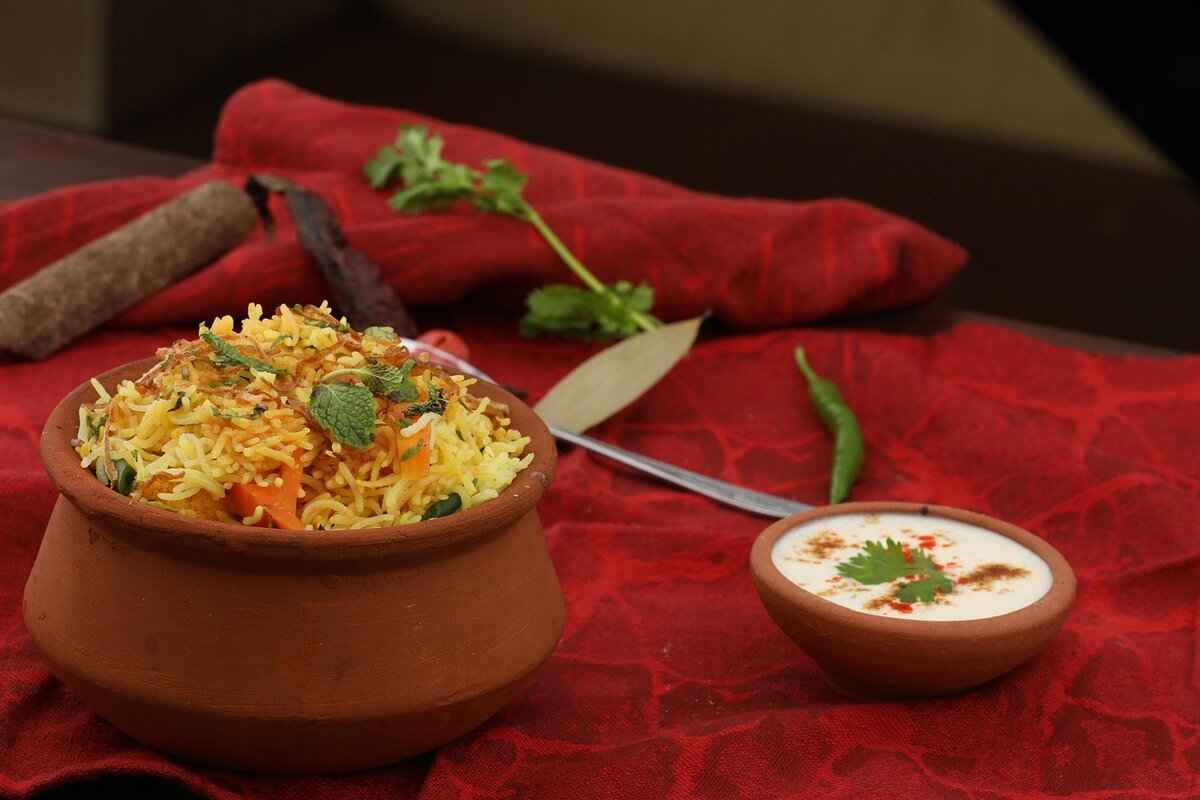
6. Flavor Profiles: Bengali Biryani
Bengali Biryani is a delightful dish that showcases the culinary richness of Bengali culture. Unlike its more robust counterparts, the flavor profile of Bengali biryani is often characterized by a subtle sweetness that sets it apart. This unique taste is achieved through the careful selection of ingredients and the cooking techniques employed.
At the heart of Bengali biryani are its key ingredients, which include marinated meats and potatoes. The use of potatoes is particularly noteworthy, as they absorb the spices and flavors during the cooking process, contributing to the dish’s overall comforting and hearty nature. The marination of the meat typically involves a blend of spices that are not overpowering but rather enhance the natural flavors of the ingredients.
Additionally, the spices used in Bengali biryani are often milder compared to those in other biryani varieties. Common spices include cardamom, cinnamon, and cloves, which provide a warm aroma without overwhelming the palate. This careful balance allows the dish to maintain its comforting essence, making it a favorite among many.
The cooking technique, often employing the Dum method, further enriches the flavor profile. By layering the rice and meat and cooking them slowly, the flavors meld together beautifully, creating a dish that is both aromatic and satisfying. The end result is a biryani that not only satiates hunger but also evokes a sense of nostalgia and warmth.
In summary, the flavor profile of Bengali biryani is a harmonious blend of subtle sweetness and gentle spices, making it a comfort food that resonates deeply with those who enjoy it. Its unique characteristics reflect the rich culinary traditions of Bengal, inviting all to experience its delightful taste.
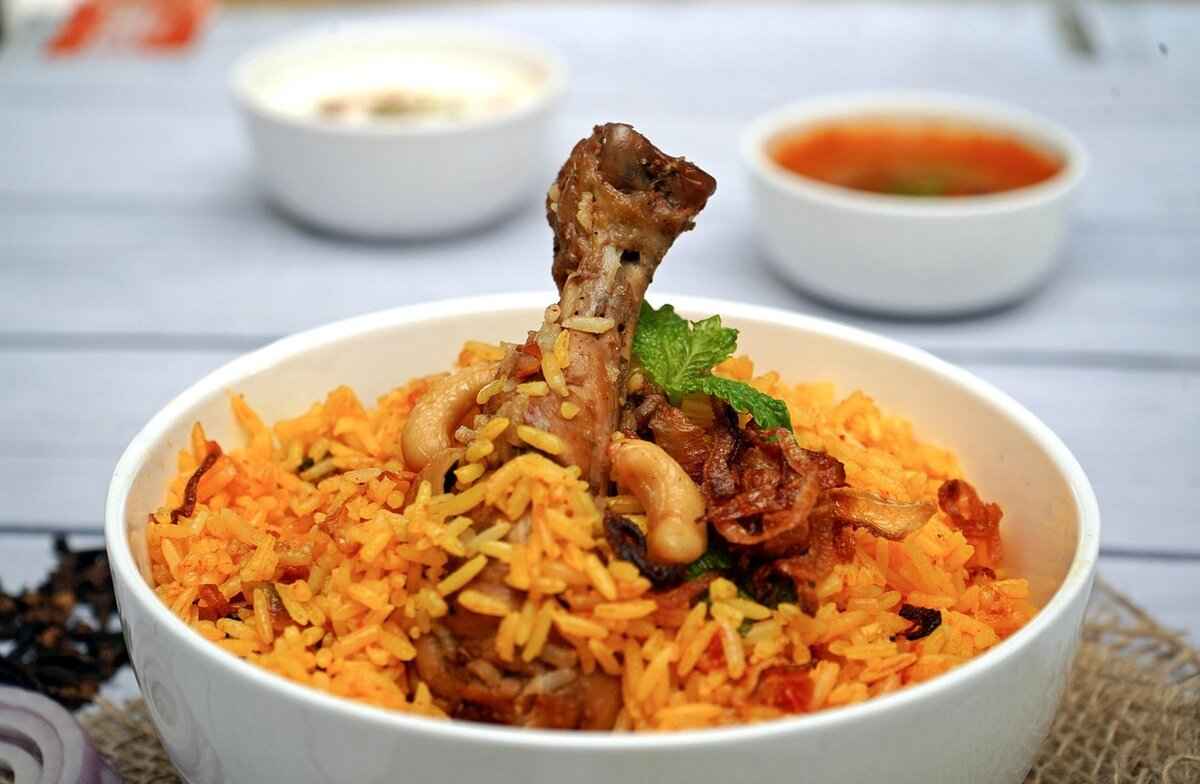
7. Flavor Profiles: Lucknowi Biryani
Lucknowi Biryani is a culinary masterpiece that embodies the essence of royal Indian cuisine. Renowned for its exquisite flavor profile, this dish stands out due to its careful selection of ingredients and meticulous cooking techniques. The use of saffron and a rich blend of spices gives Lucknowi biryani a distinctive aroma and taste that is both luxurious and inviting.
At the heart of Lucknowi biryani’s flavor is saffron, a spice that not only adds a vibrant color but also infuses the dish with a unique depth of flavor. This spice is often complemented by an array of aromatic spices such as cardamom, cloves, and cinnamon, each contributing to the dish’s complex flavor profile. The careful layering of these ingredients during the cooking process ensures that each grain of rice absorbs the rich essence of the spices.
The cooking method, known as Dum, plays a crucial role in enhancing the flavors. This technique involves sealing the pot tightly, allowing the ingredients to steam and cook in their own juices. As a result, the meat becomes tender and succulent, while the rice remains fluffy and aromatic. The slow cooking process allows the spices to meld beautifully, creating a symphony of flavors that dance on the palate.
In addition to saffron, Lucknowi biryani often features marinated meats, which are infused with yogurt and spices before being layered with rice. This preparation not only enhances the flavor but also ensures that the meat is juicy and flavorful. The combination of these elements results in a dish that is not only a feast for the senses but also a reflection of the rich culinary heritage of Awadh.
In summary, the flavor profile of Lucknowi biryani is characterized by its robustness and aromatic qualities, making it a dish that is both luxurious and deeply satisfying. Its association with royal feasts only adds to its allure, inviting food lovers to indulge in a truly remarkable culinary experience.

8. Cultural Significance of Bengali Biryani
Bengali Biryani is not merely a dish; it is a culinary emblem that resonates deeply within the cultural fabric of Bengal. This aromatic rice dish, rich in flavors and traditions, is often the centerpiece of celebrations and festivals, symbolizing both hospitality and community. The preparation and serving of Bengali biryani during special occasions reflect the importance of togetherness and familial bonds in Bengali culture.
During weddings, religious festivals, and family gatherings, Bengali biryani is a must-have. Its presence at these events signifies warmth and generosity, as families come together to share not just food, but also stories and laughter. The dish is often accompanied by sides like salad and raita, enhancing the overall dining experience and encouraging communal sharing.
The cultural significance of Bengali biryani extends beyond mere consumption; it is a tradition passed through generations. Each family often has its own unique recipe, which is cherished and preserved, making the dish a personal and familial treasure. This culinary heritage is a testament to the rich history and diversity within Bengali cuisine.
Moreover, the preparation of Bengali biryani often involves a meticulous process that includes marinating meats, selecting the finest spices, and layering rice and meat with care. This attention to detail not only enhances the dish’s flavor but also reflects the dedication and love that goes into preparing a meal for loved ones.
In conclusion, Bengali biryani is more than just a meal; it is a celebration of culture, a symbol of hospitality, and a cherished tradition that brings people together. Its role in Bengali celebrations underscores the importance of food in fostering connections and preserving cultural identity.
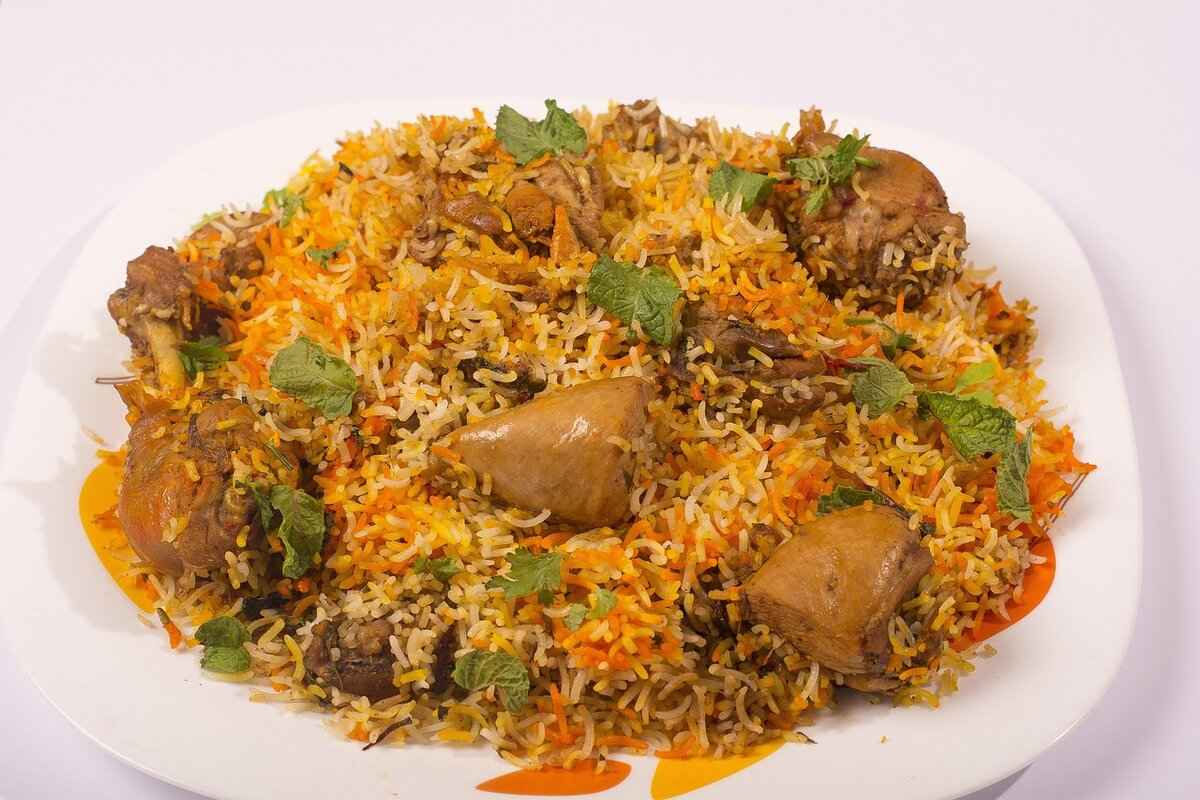
9. Cultural Significance of Lucknowi Biryani
Lucknowi biryani is not merely a dish; it is a culinary masterpiece that embodies the rich heritage and history of the Awadh region in India. The city of Lucknow, once the seat of the Nawabs, has a long-standing tradition of lavish feasts and exquisite dining experiences. Biryani, in this context, serves as a symbol of royalty and sophistication, often associated with the grandeur of Nawabi culture.
This dish is deeply woven into the social fabric of Lucknow, often served during significant celebrations, weddings, and festivals. It represents a culinary legacy that has been passed down through generations, showcasing the artistry and skill of local chefs, known as khansamas, who have perfected the art of biryani-making over centuries.
| Occasions for Serving Lucknowi Biryani | Significance |
|---|---|
| Weddings | A symbol of prosperity and abundance |
| Festivals | Celebration of cultural heritage and community |
| Family Gatherings | Strengthening family bonds and traditions |
Moreover, Lucknowi biryani is often accompanied by raita (yogurt sauce) and salad, enhancing its flavor and making it a complete meal. The meticulous preparation process, which includes marinating the meat and layering it with fragrant rice, reflects the attention to detail that is characteristic of Awadhi cuisine.
In contemporary times, Lucknowi biryani continues to thrive, with numerous restaurants and eateries dedicated to preserving this culinary heritage. It serves not only as a dish but as a cultural ambassador that introduces people to the rich history and traditions of Lucknow. As such, biryani remains a cherished part of the city’s identity, celebrated by locals and visitors alike.

10. Popular Variations of Bengali Biryani
Bengali Biryani is a beloved dish that has evolved over time, leading to a rich tapestry of regional variations. Each variation brings its own unique twist to the classic recipe, reflecting the local culture and culinary preferences. This article delves into the popular variations of Bengali biryani, highlighting their distinctive features and flavors.
| Variation | Description |
|---|---|
| Kolkata Biryani | This is perhaps the most famous variation, characterized by the addition of potatoes and boiled eggs. The use of marinated meat and aromatic spices gives it a unique flavor profile that is both subtle and rich. |
| Dhaka Biryani | Originating from Bangladesh, this version is known for its spicier taste and the use of different cuts of meat. It often features green chilies and a variety of local spices, making it a favorite among spice lovers. |
| Hyderabadi Biryani | While not traditionally Bengali, this variation has made its way into Bengali cuisine. It is known for its use of saffron and yogurt, resulting in a rich and aromatic dish that is celebrated for its luxurious flavors. |
| Chittagong Biryani | This variation features a distinct blend of spices and is often served with salad and yogurt. It reflects the coastal influences of Chittagong, incorporating seafood elements in some recipes. |
The diversity of Bengali biryani variations showcases the adaptability of Bengali cuisine, allowing it to incorporate local ingredients and flavors. Whether you prefer the comforting taste of Kolkata biryani or the spicy kick of Dhaka biryani, each version offers a unique culinary experience that celebrates the rich cultural heritage of Bengal.
In conclusion, the variations of Bengali biryani not only highlight the dish’s versatility but also its significance in representing the local identities and traditions of the region. From festive occasions to everyday meals, these biryanis continue to be a staple in Bengali households, making them an integral part of the culinary landscape.
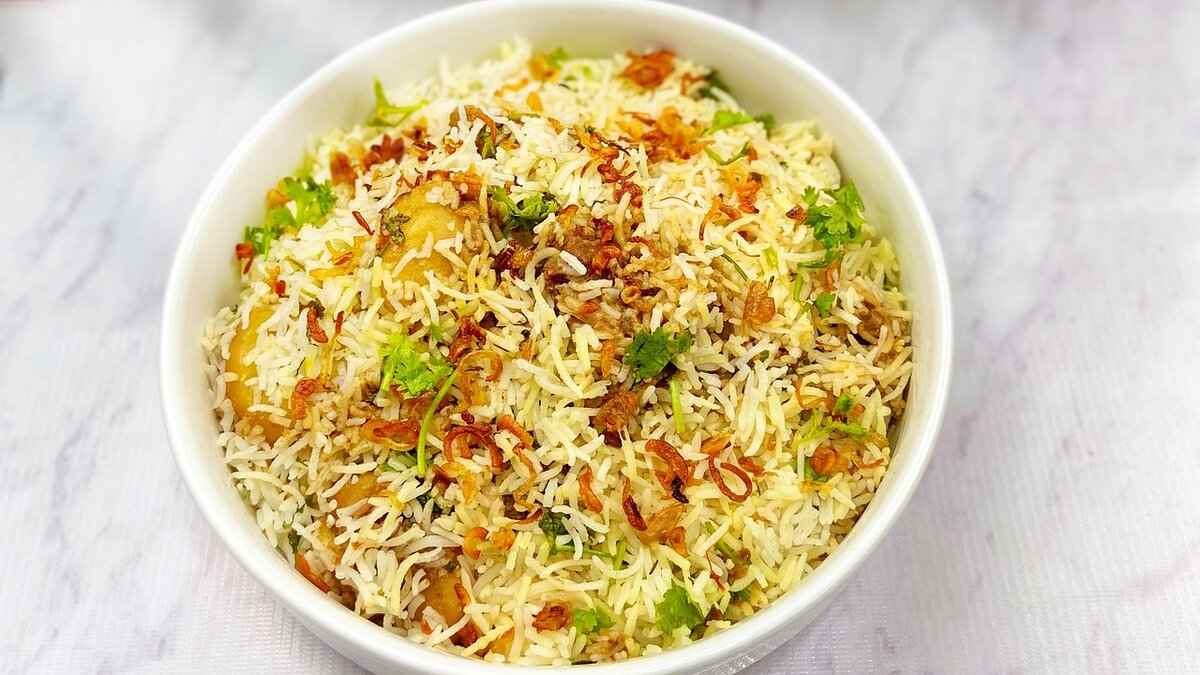
11. Popular Variations of Lucknowi Biryani
Lucknowi Biryani is a culinary masterpiece that showcases the rich heritage of Awadhi cuisine. Among its many variations, the most notable are the Kacchi and Pakki biryanis. Each of these variations has its own unique preparation methods and flavor profiles, making them stand out in the vast world of biryanis.
The Kacchi Biryani is prepared using raw marinated meat, typically lamb or chicken, which is layered with partially cooked rice. The marination process employs a blend of spices, yogurt, and sometimes saffron, allowing the flavors to deeply penetrate the meat. This dish is then sealed and cooked using the Dum method, where the pot is covered tightly to trap steam, resulting in tender meat and aromatic rice. The slow cooking ensures that the flavors meld beautifully, creating a rich and indulgent dish that is often served during special occasions.
On the other hand, Pakki Biryani is made with pre-cooked meat that is layered with fully cooked rice. The meat is usually marinated first, then cooked separately before being combined with the rice. This method allows for a quicker preparation time compared to the Kacchi style. The flavors are still robust, but the texture is slightly different, with the rice and meat maintaining their individual characteristics while still complementing each other.
| Type of Biryani | Preparation Method | Flavor Profile |
|---|---|---|
| Kacchi Biryani | Raw marinated meat layered with partially cooked rice, cooked using Dum | Rich, tender meat with aromatic rice |
| Pakki Biryani | Pre-cooked meat layered with fully cooked rice | Robust flavors with distinct textures |
Both variations of Lucknowi biryani reflect the culinary richness of the Awadh region and are celebrated for their unique flavors and preparation techniques. Whether you prefer the indulgent Kacchi or the quicker Pakki style, each biryani offers a delightful experience that embodies the essence of Awadhi cuisine.

12. Conclusion: Choosing Between Bengali and Lucknowi Biryani
In the world of biryani, the debate between Bengali and Lucknowi varieties is as rich and layered as the dishes themselves. Each biryani not only tantalizes the taste buds but also tells a story of cultural heritage and regional pride. While both styles offer a delightful culinary experience, the decision of which to choose ultimately hinges on personal preference.
Bengali biryani is known for its unique incorporation of potatoes and marinated meats, creating a subtly sweet flavor profile that appeals to many. This dish is often associated with festivals and family gatherings, making it a symbol of hospitality in Bengali culture. Its comfort food status is undeniable, as each bite evokes a sense of warmth and tradition.
On the other hand, Lucknowi biryani, also known as Awadhi biryani, is characterized by its luxurious use of saffron and a variety of aromatic spices. This biryani reflects the royal heritage of Awadh and is often associated with grand feasts and celebrations. The robust flavors and meticulous cooking techniques create a dish that is not only a meal but an experience.
When considering which biryani to indulge in, one should think about the flavor preferences. If you enjoy a dish that is comforting and subtly sweet, Bengali biryani may be your go-to. Conversely, if you prefer a more aromatic and rich flavor, Lucknowi biryani could be the perfect choice.
Ultimately, both biryanis offer a unique culinary journey. Whether you are drawn to the cultural significance of Bengali biryani or the royal flavors of Lucknowi biryani, each dish provides a delicious way to connect with its respective heritage. Therefore, the choice between Bengali and Lucknowi biryani is not just about taste, but also about the stories and traditions they carry.
Frequently Asked Questions
- What is the main difference between Bengali and Lucknowi biryani?
The primary difference lies in their ingredients and flavor profiles. Bengali biryani often includes potatoes and has a subtle sweetness, while Lucknowi biryani features saffron and a robust mix of spices, reflecting its royal heritage.
- How is Bengali biryani prepared?
Bengali biryani is typically prepared using the ‘Dum’ method, where marinated meat and rice are layered and slow-cooked together. This technique allows the flavors to meld beautifully, creating a unique texture and taste.
- What are the cultural significances of these biryanis?
Bengali biryani is a staple at celebrations and festivals, symbolizing hospitality and tradition. In contrast, Lucknowi biryani represents the culinary legacy of the Nawabs, integral to the social and cultural fabric of Lucknow.
- Are there any popular variations of these biryanis?
Yes! Bengali biryani has regional variations that showcase local tastes, while Lucknowi biryani includes distinct types like ‘Kacchi’ and ‘Pakki,’ each with its own preparation method and flavor profile.
- Which biryani should I choose?
Choosing between Bengali and Lucknowi biryani ultimately comes down to personal preference. Each offers a unique culinary experience that reflects its cultural heritage and regional flavors, so why not try both?

